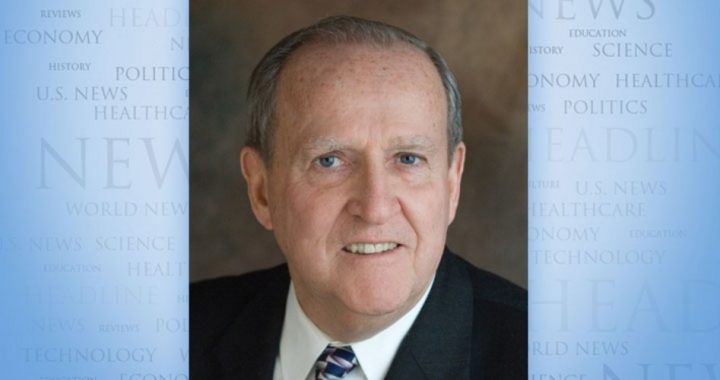
During the period when Senate Republicans were planning to speed approval of Judge Amy Comey Barrett taking a seat on the Supreme Court, various Democrats threatened to “pack the Court” with individuals favoring their leftist leanings, by expanding the number of justices. From his senior position as House Judiciary Committee chairman, Jerry Nadler (D-N.Y.) clearly stated such an intention. Congressman Joe Kennedy (D-Mass.) echoed Nadler’s desire, but his defeat in a Senate primary and diminished his worth and assured his departure from the House.
Of course, Barrett’s nomination by President Trump has since been confirmed by the the Senate, and she is now one of the nine justices on the Court. Democrats are outraged because of the speed of the Senate’s approval prior to the November 3 elections. Nadler characterizes the Senate as being “in the iron grip of Mitch McConnell,” the Senate’s Majority Leader. But there is little doubt that were Democrats numerically strong in the Senate, they would have acted in a similar fashion. Now that Nadler and others Democrats have suffered defeat in the battle for the open seat on the court, we hear next to nothing about the packing plan. The welcome silence may not last if Joe Biden wins the presidency.
What about a plan to pack the Court with favorites? Can the number of Supreme Court Justices be changed? Is there any precedent to lend either credibilty or negativity to such a move?
The first consideration about such a threat is to realize that the Constitution says nothing about how many Supreme Court justices there should be. Nor does it mention any amount of time after a vacancy occurs when a president can nominate a successor to fill it. The document states only that a president “shall have power, by and with the advice and consent of the Senate, to appoint … judges of the supreme Court.” Nothing is stated about how many judges there shall be. Nor are there any guidelines or restrictions about when a president can seek to fill a vacancy, or at what stage of their term in office senators can approve, refuse to consider, or reject a Supreme Court nominee.
President Trump always rejected claims that he had to wait until after the 2020 elections before naming his choice to replace the late Ruth Bader Ginsburgh. He tweeted his determination as follows:
We were put in this position of power and importance to make decisions for the people who so proudly elected us, the most important of which has long been considered to be the selection of United States Supreme Court Justices.
And Mr. Trump acted almost immediately when the vacancy occurred. Democrats never wanted another Trump-nominated justice to join the court. So they subdued their court-packing plan, awaiting the results of the November 3 presidential election. They don’t want anyone joining the court who doesn’t agree with their leftist leanings. They even know that court-packing was attempted by a Democrat president in 1937. His name was Franklin Delano Roosevelt.
Even before being overwhemingly relected for a second four-year term in 1936, Roosevelt decided to counter the anti-New Deal majority in the Supreme Court that had declared some of his favorite measures unconstitutional. He knew of the 1869 law stating that the Supreme Court should consist only of a chief justice and eight associate justices, a number that has never been challenged and remains the rule today. So early in 1937, he sought in a roundabout way to have Congress change the court’s number by urging passage of a measure known as the Judicial Procedures Reform Bill. It called for appointment of as many as six new associate justices, each taking a seat at the Court whenever a sitting judge reached age 70 and did not retire. His bold plan drew a wide range of negative responses, even one from his own vice president, John Nance Garner. This bold but never-enacted move gave rise to the term “court packing.”
Early in 1937, at the start of Roosevelt’s second term, the Supreme Court surprisingly ruled in favor of a Washington State minimum wage law that fit comfortably with FDR’s New Deal schemes. Justice Owen Roberts, who had previously been an opponent of the president’s socialistic measures, had seemingly become a Roosevelt partisan. But the actual court-packing measure noted above received no action from Congress because of delaying tactics engineered by Senate Judiciary Committee chairman Henry Ashurst. He sat on the Roosevelt-favored measure for 165 days before allowing the Senate Judiciary Committee to consider it. That committee registered four consecutive negative 10 to 8 votes, enough to permanently kill the bill. In the meantime, another justice switched from his once negative opinion of the New Deal, and still another who had been an opponent of the Roosevelt agenda died a natural death. The president no longer needed to pack the high Court to have it favor his New Deal measures; all he needed to do was nominate New Deal-favoring candidates for the court — which he did. He almost immediately had enough support for his socialistic schemes to cease worrying about any of his favored measures being declared unconstitutional.
If Democrat Joe Biden becomes the occupant of the White House, and Democrats gain a majority in the Senate, they would most likely seek to pack the Court in 2021. On the other hand, if Donald Trump wins reelection and Republicans retain a majority in the Senate, there will be no court packing.



